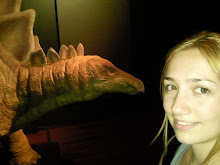They are Apologetics Press. And they offer no apology in slaughtering science with the aim of disproving it (or as they've put it "rationalising") with common sense... and science. Their section, Sensible Science, is full of these common sense scientific articles on why science is wrong and religion is right - a little -hypocritical- guys.
Step up to the plate, my new nemesis, Brad Harrub Ph.D(?) (in what?)
He's one of the leading causes for sleep deprivation in evolutionists; his theories leave your mind gasping for correctly used scientific evidence and begging for a lack of religeous influence. Let me highlight one article in particular: Evolutionists just can't admit to getting something wrong!
This is of great interest to me, as I was researching literature on extant coelacanth by Peter Forey to add to my current research and description of a new fossil coelacanth specimen... and I instead found the link to Harrub's garbage bin, having referenced Forey's Nature article. Harrub goes on to belittle the scientific community for not admitting that they were incorrect in appointing the coelacanth as "transitional species to terrestrial tetrapods", when at the time the living species had not been discovered.
In 1938, a South African museum director (East London), Marjorie Courtney-Latimer, identified a fish as "unique" and ancient in appearance. She took it back to the museum and tried to contact a fellow scientist (with a hobby in ichthyology) and friend, J.L.B. Smith. He finally saw the specimen and declared it to be exactly what Miss Courtney-Latimer had suspected: the only extant species of an ancient fish lineage believed to have been extint since the dinosaurs. Due to this finding, Harrub believes that it couldn't be the direct ancestor to tetrapods because it exists now. The problem with this idea has been seen in the ape-human theory... "if man evolved from primitive apes and ape-like creatures then why are there still apes?"
Well, once upon a time... there were multiple species of coelacanth, big ones, medium ones, and tiny ones; all living happily at different times during the Earth's LLLLOOOONNNNGGGGG series of time periods and epochs. Some couldn't keep up with the changes in the world and died out, other lasted longer... sadly Latimeria chalumnae and L.menadoensis are (for now) the last of the entire Order, being the only living species left from this lineage.
For your benefit and understanding, Mr. Harrub:
There are many reasons as to why these species were not direct ancestors to the tetrapods. Simply, they could be a young species, maybe evolved some tens of thousands of years ago. It could have been another genera from the Coelacanthiformes which gave rise to the tetrapods. But, since science is bound to make a few mistakes now and then as it learns about new species and techniques in understanding currently known species, it is more likely that corrections are made to the phylogenic tree after discovering that lungfish are possibly more advanced than coelacanth (i.e. precursors to terrestrial lungs instead of swimbladder). While Forey says that the extant coelacanth live at depths of 100+ metres (and Harrub suggests that because of the depth, coelacanth couldn't be the transitional species), fossil coelacanths have been uncovered in areas where there was once a shallow sea with reefal fringes and coral atolls. One species does not dictate the behaviour and environmental influences for the rest within its Order.
So, put quite frankly, Mr. Harrub...
Nature abhors YOU!


No comments:
Post a Comment